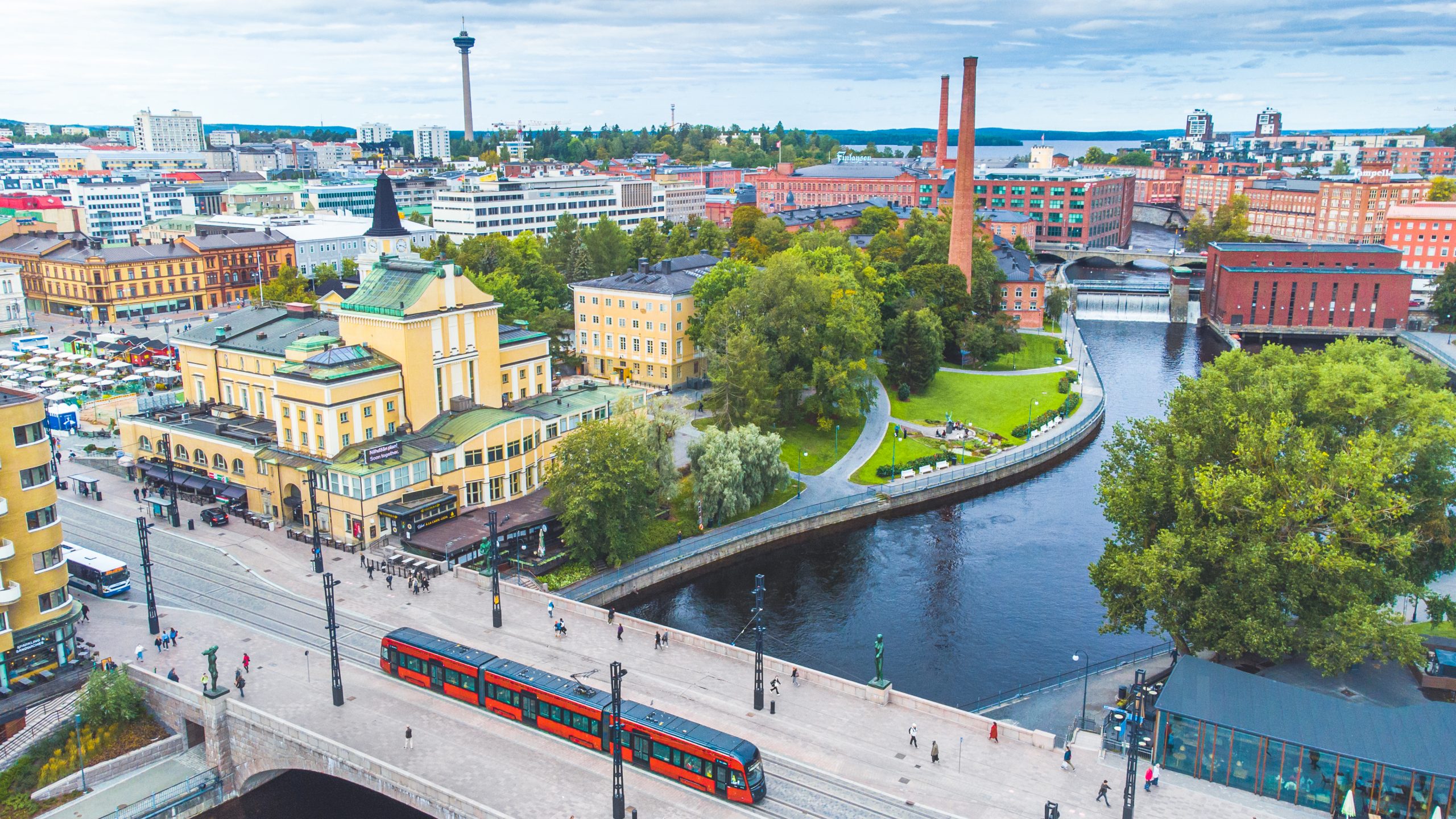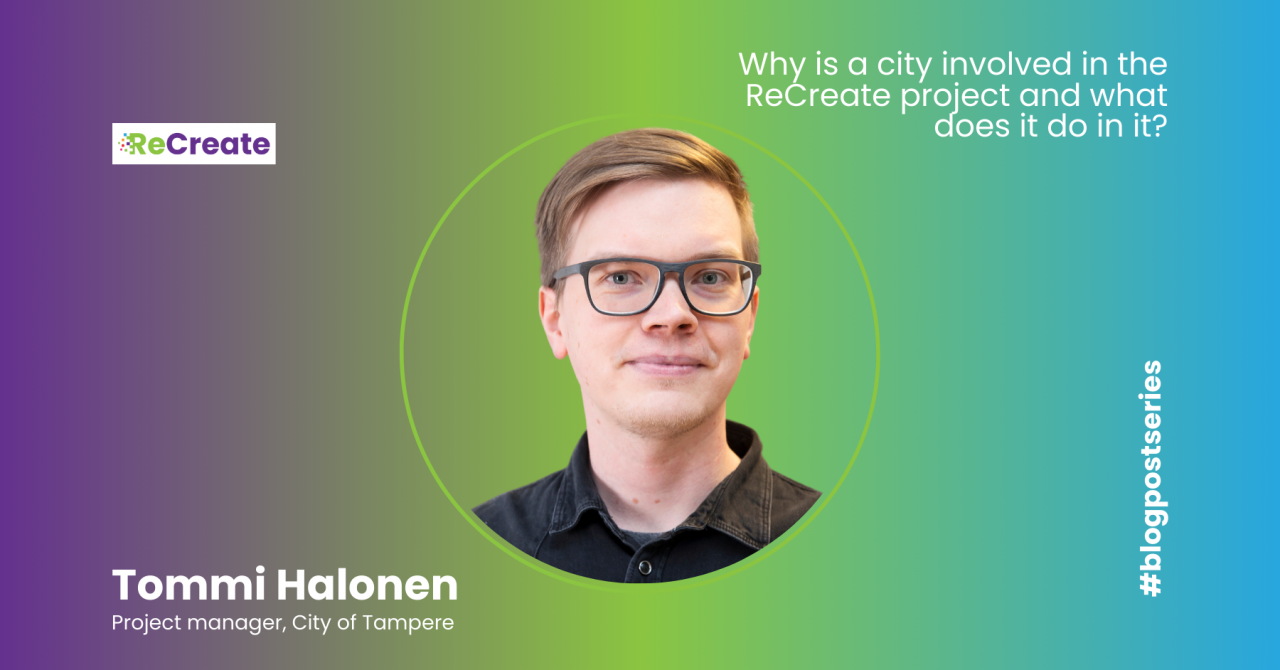Tommi Halonen, project manager, City of Tampere, Finland
Sometimes I get asked: ‘Why is the City of Tampere participating in ReCreate, and what is our role in the project?’ It might be much easier to see why a university or a construction company is taking a part in a project where the goal is to (de)construct buildings in a novel way. But what is the city doing in ReCreate, especially when the deconstruction pilot was not a public building? From my viewpoint, cities have in particular the following two roles to play in the circular transformation:
Role 1: developing public processes that enable the implementation of CE solutions.
First, cities have a significant role as regulators in the construction industry. If there are any issues related to public regulation that do not allow reuse or make it extremely bureaucratic, it is impossible or very difficult (or expensive) to create business out of ReCreate or any other circular solution. There are especially two matters that are regulated by the city authorities that are worth paying attention to: (1) implications of waste legislation and (2) product approval practices.
(1) During the ReCreate project, we’ve had multi-stakeholder discourse in Finland about whether reused building parts should be considered as waste or not – some stakeholders opposed, and some supported the waste status. However, at the end, it is the city officers that control the matter and they needed to decide how to proceed with it. I cannot go through all the matters the authorities needed to consider in order to clarify the issue but in brief, the hardest part was to find a balance between environmental protection and excessive (too heavy) bureaucracy. Eventually the authorities were able to clarify their policies so that, in Finland, reused components are not considered as waste when certain pre-requisites are fulfilled. At the time of writing this blog, we’ve also received an official decision that ReCreate elements are not considered as waste. This is a huge development step in the Finnish industry towards circularity.
(2) Another matter the cities regulate is the product approval of reused building components. Unlike new products, the CE (conformité européenne) mark does not apply to reused products. In Finland, the products are approved as part of a so called ‘building site approval process’ that is regulated by the municipal building supervisors. There is no prior experience of the approval process. Consequently, the situation is now very similar to the aforementioned case: city authorities must again develop practices and policies that ensure that essential technical requirements are met when reusing components but are not too burdensome for practitioners to comply with. As I write this blog, we are in the process of discussing these practices with the authorities.
Role 2: creating needed incentives for companies for CE development.
Cities are not only passively enabling the circular transformation, but they can – and they must – actively initiate the change, too. Indeed, me and my colleagues have received feedback from multiple companies stating that due to early stage of the circular development, the industry cannot move to circularity solely with the help of market drivers and market logic. The companies emphasized the need for public initiatives that create incentives for circular development. Cities have at their disposal policy instrument that can create this market push. The most notable instruments are (1) public procurements and (2) plot handovers.
(1) During the project, we have had multiple meetings and workshops with the leaders of the city so that Tampere could incorporate reuse to future procurements and building projects. Sooner or later, reuse of building components will break through to public procurements and when it does, it will have a significant impact on the market.
(2) Another policy instrument that can initiate change is the plot handover process. In Finland, municipalities are the biggest landowners in urban areas. Traditionally, sustainability or circularity goals have not been part of the handover processes. However, in 2022 the City of Tampere initiated an all-time first circular plot competition. It was a success with nearly 20 building proposals and applications and received a lot of positive attention in general as well as in professional media. Many cities got inspired and wanted to repeat the circular competition. What we decided to do with my colleagues was to launch a working group, the goal of which was to create upgraded and unified circular criteria for the municipalities. Around 30 experts worked on the criteria for a year, and after receiving feedback in different workshops and seminars, we were able publicize the criteria at the beginning of this year. Now, we are keen to see the impact that the criteria will create when the cities are starting to include them to their plot handovers and competitions.
All in all, while this blog is not an exhaustive list of all the role the cities have in the circular transformation, I do hope that I was able make the case that cities are one of the major players enabling the transition. Indeed, for me personally, it is very difficult to see how the industry could make the transition to the circular economy on a large scale if the cities are not developing public policies and processes to promote circularity.



